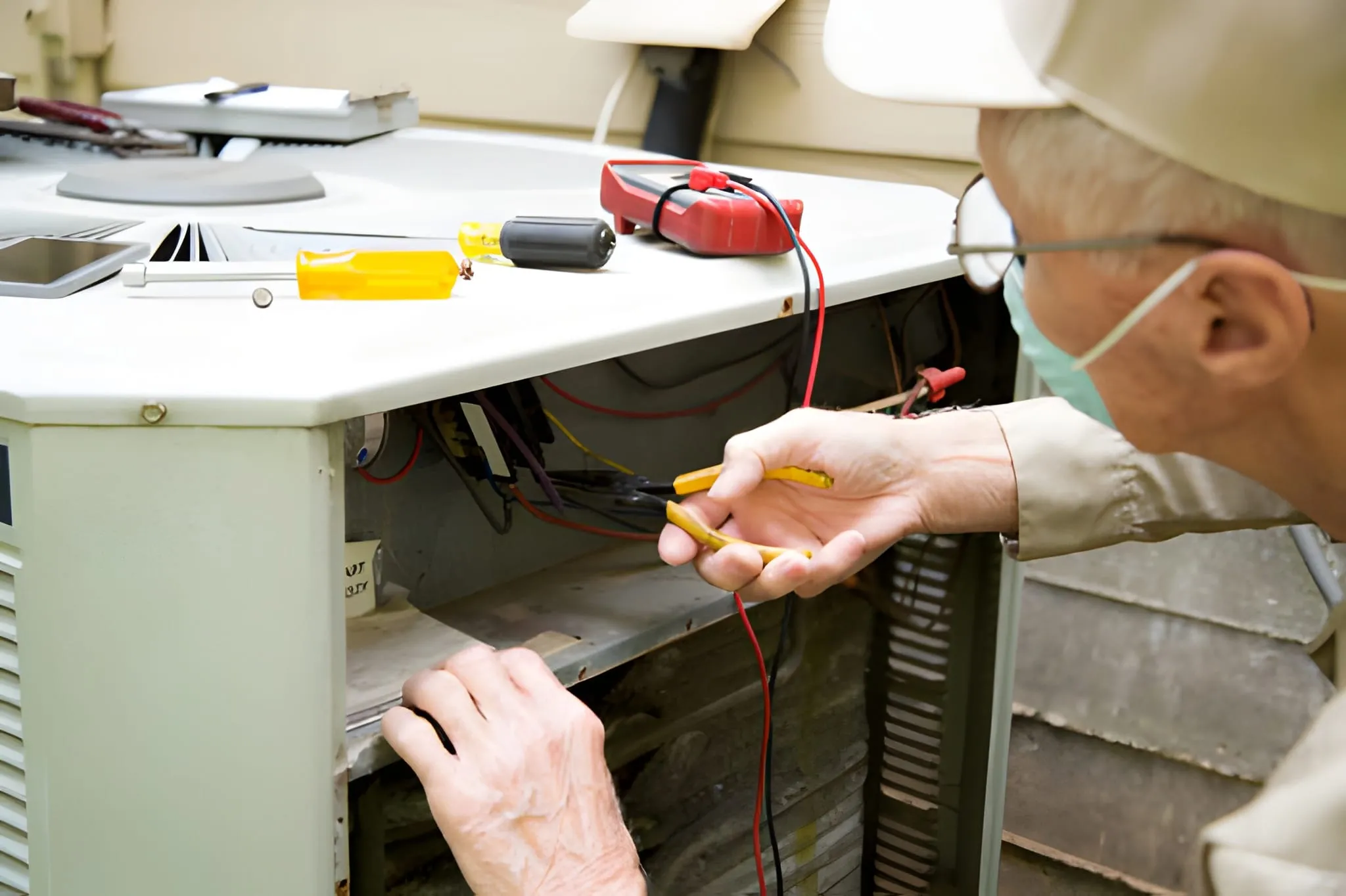AC Tune-Up in Basehor, KS

AC Tune-Up in Basehor, KS
A seasonal AC tune-up is one of the smartest investments homeowners in Basehor, KS can make before the heat of summer arrives. With hot, humid summers, pollen and dust through spring, and occasional severe storms, air conditioners in this area work hard and face unique stresses. A professional AC tune-up restores peak performance, identifies small problems before they become breakdowns, and helps your system run more efficiently and last longer.
Why a seasonal AC tune-up matters in Basehor, KS
- Basehor summers often bring extended high temperatures and humidity, which increases runtime and wear on compressors, motors, and controls.
- Spring pollen, tree debris, and construction dust common to growing suburbs clog filters and coils faster here than in drier regions.
- Midwestern storms, hail, and wind can bend fins, clog outdoor coils with debris, or damage electrical components—post-storm inspections are especially valuable.
A tune-up tailored to these local conditions reduces the chance of a mid-summer failure and improves indoor comfort when you need it most.
Common AC problems in Basehor homes
- Dirty evaporator and condenser coils from pollen and dust buildup, reducing cooling capacity.
- Low refrigerant levels or leaks leading to longer run times and iced evaporator coils.
- Restricted airflow from clogged filters or obstructed ductwork, causing uneven cooling and higher energy use.
- Worn belts, failing capacitors, or deteriorating fan motors from heavy seasonal use.
- Thermostat calibration drift after long winters, causing short-cycling or inaccurate temperature control.
- Clogged condensate drains and pans that can cause water damage or microbial growth.
What a comprehensive AC tune-up includes
A full seasonal tune-up focuses on performance, safety, and efficiency. Typical components are inspected and serviced during the visit:
- Pre-inspection & system history review: Check system age, past repairs, and any recurring symptoms.
- Coil and condenser cleaning: Remove pollen, dirt, and debris from the outdoor condenser and indoor evaporator coils to restore heat transfer.
- Refrigerant check: Verify refrigerant charge and pressures. If levels are low, a leak diagnosis is performed—refilling without fixing a leak is only a temporary fix.
- Air filter inspection and replacement: Ensure proper filtration to maintain airflow and indoor air quality. Recommend correct filter type and schedule.
- Belt and motor inspection: Inspect and replace worn belts, check motor bearings, and lubricate moving parts when applicable.
- Electrical and safety checks: Test capacitors, contactors, wiring, and safety switches to prevent electrical failures or unsafe operation.
- Thermostat calibration and controls: Ensure temperature sensors, setpoints, and program schedules are accurate and functioning.
- Drain line and pan cleaning: Clear blockages and treat drain lines to prevent overflow and mold.
- Airflow and duct check: Measure airflow and visually inspect accessible ductwork for disconnections or heavy dust.
- Performance test: Measure system temperatures, run-time, and overall efficiency. Provide a report of findings and recommended repairs.
Diagnostics and decision points explained simply
Technicians will use basic measurements and observations to determine whether the system needs minor adjustments, component replacements, or more extensive repair:
- Low refrigerant with no visible damage often indicates a leak. The long-term solution is leak repair plus proper recharge.
- Weak cooling with dirty coils is usually resolved by thorough cleaning and restoring airflow.
- Short-cycling or frequent on/off cycles can come from thermostat issues, oversized systems, or electrical component failure—each has a different fix.
- Electrical issues (burnt contacts, weak capacitors) should be addressed promptly to avoid compressor damage.
Benefits of regular tune-ups for efficiency and longevity
- Improved energy efficiency: A clean, calibrated system consumes less power and may reduce monthly cooling costs.
- Fewer breakdowns: Small issues get corrected before they turn into emergency repairs during peak heat.
- Longer equipment life: Proper lubrication, clean coils, and correct refrigerant levels reduce stress on major components.
- Better comfort and air quality: Consistent temperatures, better humidity control, and cleaner air filters improve indoor living conditions.
- Documentation and warranty compliance: Annual maintenance often satisfies manufacturer warranty requirements and creates a service record that helps with resale value.
When to schedule an AC tune-up
- Ideally schedule a tune-up in spring before peak cooling season—this gives time for repairs before heavy use.
- For heat pump systems, perform checks in both spring and fall since the unit handles cooling and heating.
- After severe storms, schedule an inspection to check the outdoor unit for hail or wind damage.
- Homes with heavy pollen exposure, pets, or smokers may benefit from more frequent filter and indoor checks.
Maintenance plans and what to expect from enrollment
Many homeowners opt for an annual or semiannual maintenance plan to simplify upkeep. Typical maintenance plan features include:
- Scheduled yearly or twice-yearly tune-ups with reminders.
- Priority scheduling windows during peak seasons.
- Predefined inspection lists and documented service reports for each visit.
- Discounts on repairs or parts and a record that supports warranty requirements.
- Flexible options for residential and light commercial systems.
Enrolling in a maintenance plan usually involves selecting a frequency, understanding coverage details (what’s included in tune-ups vs what’s considered repair), and receiving a maintenance schedule. Most providers will explain plan tiers so you can match coverage to system age and household needs.
Regular AC tune-ups are especially important in Basehor because our seasonal pollen, humidity, and storm activity put extra demands on cooling systems. Investing in professional seasonal maintenance keeps homes comfortable, protects equipment investment, and reduces the risk of mid-summer service interruptions. A clear tune-up checklist, routine inspections, and a documented maintenance plan give homeowners predictable performance and peace of mind throughout the cooling season.








